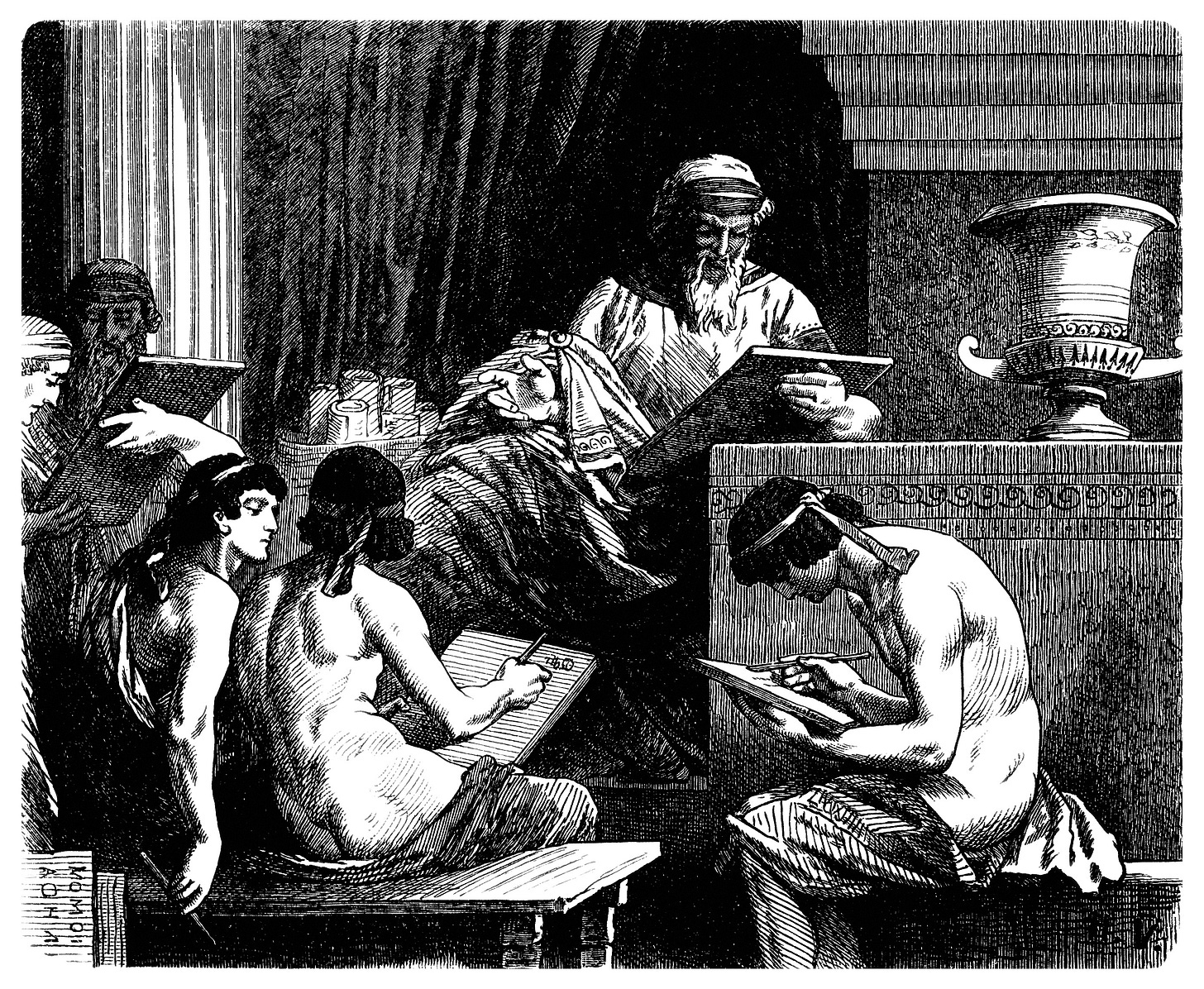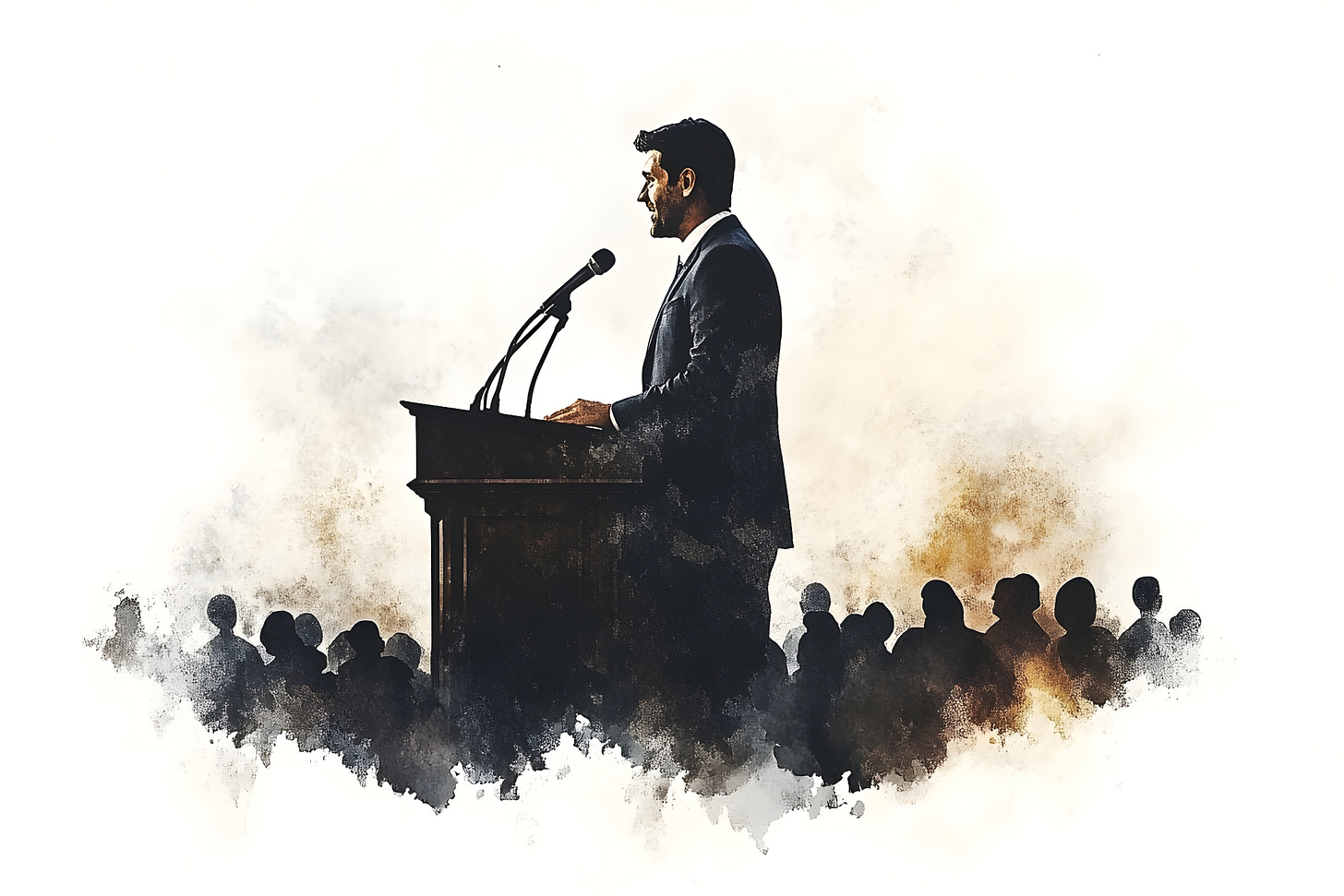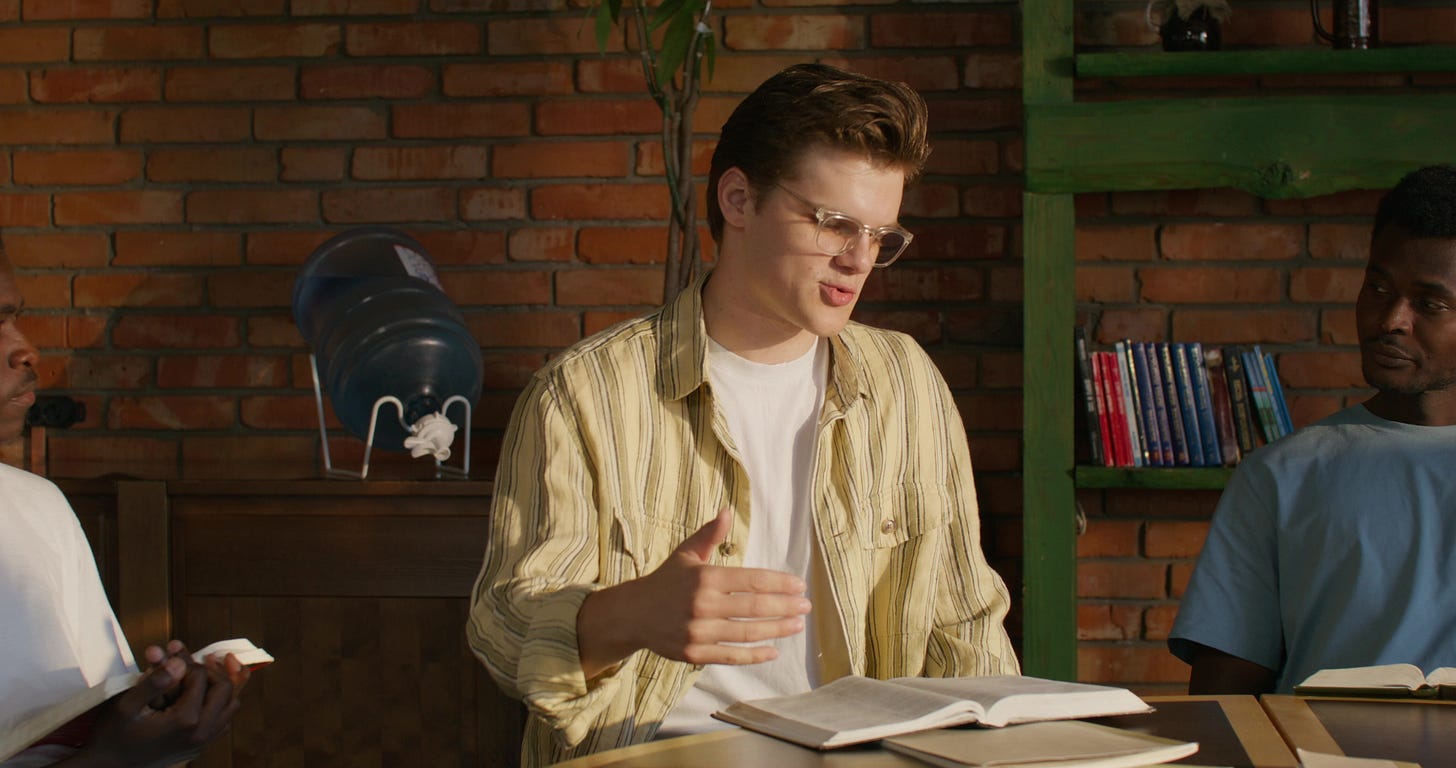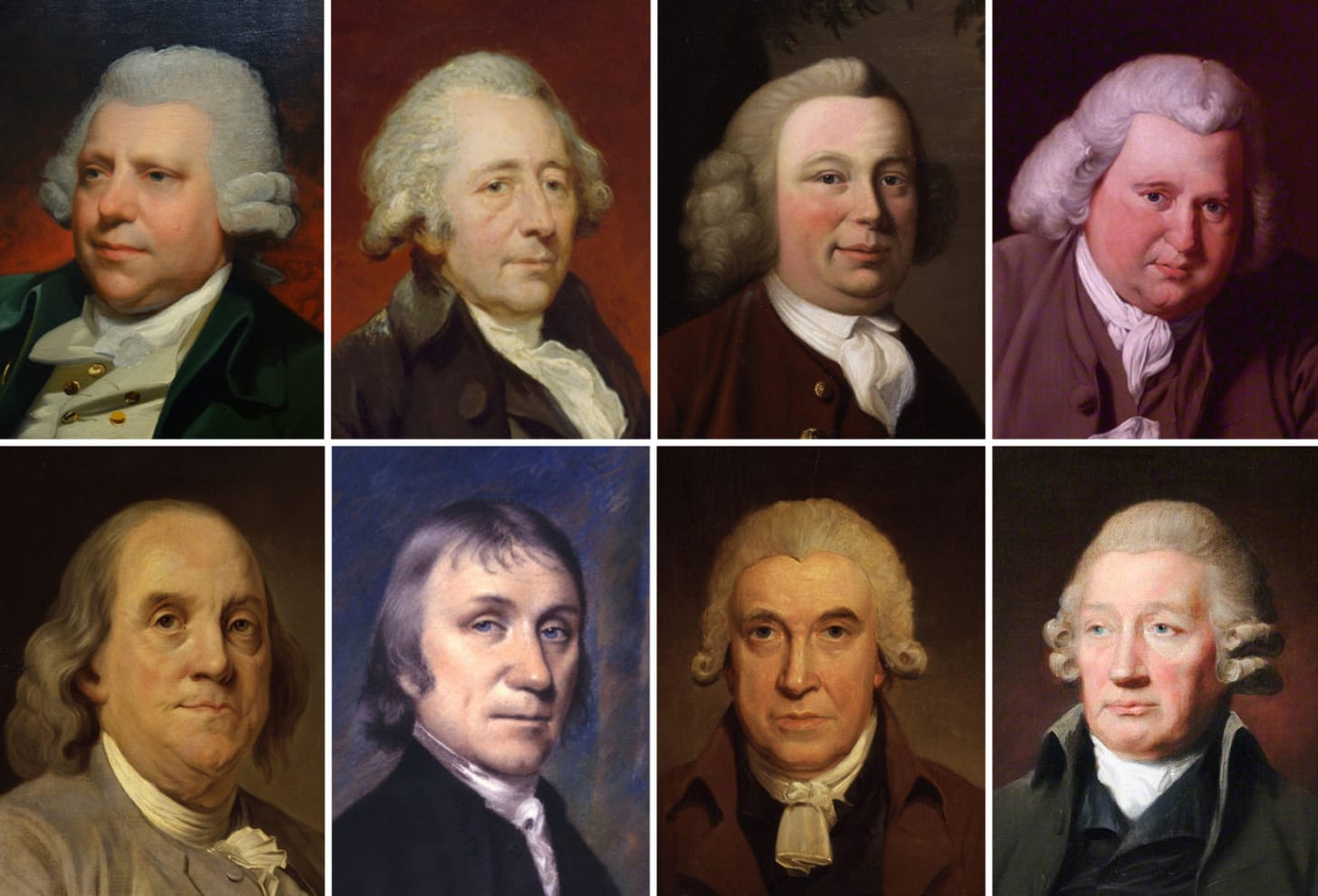You’re Not Boring—You’re Just Not Speaking Right
How One Interview Made Me Rethink Everything About Rhetoric & Public Speaking
I recently listened to an interview on the Diary of a CEO podcast with Vinh Giang—an internationally recognised speech professional. He broke down the art of speaking clearly, stressing the extent to which one well-tuned voice can alter the texture of an entire conversation. This got me thinking about just how important oratory skills have become in today’s digital world—especially if you want to succeed on platforms like TikTok and YouTube—and how modern education barely touches upon it.
So here’s the result: an essay designed to show you how to hold an audience’s attention the moment you start speaking. Drawing on both classical influences and contemporary techniques, I’ll guide you through Vinh Giang’s strategies for vocal modulation, physical expression, and structured messaging. By the end, you’ll have a practical roadmap to sharpen your speaking style, boost viewer engagement, and carve out your own distinct voice in our ever-changing digital landscape.
1. Why Effective Speaking Matters:
If you’ve ever scrolled through social media and felt your eyes glaze over videos that all sound the same, you’re not alone. In a digital realm filled with constant noise, finding a distinctive voice can seem like a nearly impossible challenge.
In fact it’s easy to think that certain people are just “born” with oratorical brilliance—the rest of us, by that assumption, are doomed to mumble in the background. But is that really true?
I found myself asking this question a few weeks ago. I was lying there, blinds pulled tight against the unwanted glare, nursing a hangover that felt like penance for a night I half wished I could rewind.
Staring at the ceiling, too tired to do anything else, I ended up scrolling through my phone and pressing play on a random episode of the admittedly mainstream Diary of a CEO. No expectations—just a dull curiosity and a headache that refused to quit.

And that’s when I encountered Vinh Giang. He was being interviewed about public speaking—this magician-turned-communication-guru with an electric presence that jolted me right out of my self-pity. In a sea of endless YouTube tips and prepackaged TED Talks, Giang somehow stood apart.
He spoke about using your voice like an instrument, about stepping beyond tired speech patterns and letting something raw, authentic take shape. Halfway through, I forgot about the pain hammering at my temples. And just lay there, letting his words vibrate through my eardrums, absorbing one insight after another like they were the only cure.
And it hit me: how many times do we let stale habits run the show? Not just the what of our words, but the how—the rhythm, the tone, the presence behind them. We march through the world armed with compliance and mundane knowledge—skills we’ve been told will keep us safe, keep us quiet—never learning how to use language as a blade to cut through the ideological rot metastasising across modern society like bone cancer.
Yet somehow, Giang’s contagious energy tore through my morning haze. His words reminded me that communication is an art form we too often overlook. Opinions will vary, but it’s pretty obvious that it can stir hearts and minds—if we dare to wield it.

And as I listened, I found my imagination slipping back centuries. Ancient Greece: Demosthenes, a Greek statesman and orator, with pebbles in his mouth, grinding words into shape until his speech impediment gave way to clarity—so effectively that modern speech therapists still applaud.
Jump ahead a millennium or two, and you have Voltaire wielding language like a blade, slicing through complacency and lighting up the Enlightenment. And the thing is, both these eras understood something crucial: oratory isn’t a birthright. It’s an art. A muscle. Trainable, flexible, and ready to be honed by anyone with the will.
In this essay, I will marry these two worlds—classic oratory and modern heuristics—to give you a roadmap for effective speech. The first part situates us in a grand tradition of speechmaking, from ancient Greece to modern Europe. The second part brings us firmly into 2025 (and beyond), where a single TikTok clip can reshape public opinion.
By the end, you’ll handle your presence like a seasoned pro. Because whether you’re standing before a boardroom table or pressing “record” on your phone, the moment you speak is the moment you begin to cut through the noise. People lean in—eyes wide, ears hungry—because a voice wielded with precision demands its audience stay and listen.
2. Lessons from Historical Orators:
For centuries, towering figures in Ancient Greece and Enlightenment Europe hammered out the fundamental rules of persuasion: structure your thoughts, connect both mind and heart, and practice until your voice becomes a finely tuned instrument.
Take Pericles, for instance, the Athenian statesman who combined clear logic with an undercurrent of human appeal. He knew that clarity—both in how you assemble your arguments and how you speak them—breeds public trust.
Then there’s Aristotle, who reduced persuasion to three core pillars:
Logos refers to logical argumentation, ensuring his words have clear reasoning.
Ethos touches upon credibility and the speaker’s moral character.
Pathos draws on emotional resonance, evoking a response from the heart.
Fail to incorporate any one of Aristotle’s three pillars, and your message, he warned, risks dissolving before it ever lands with your audience. Take Demosthenes, for instance—whom I mentioned earlier. Born with a speech impediment, he refused to be remembered as the “awkward speaker.”
And so, he hurled himself into training: pebbles in his mouth while reciting poetry, running uphill while shouting speeches. Demosthenes revealed a simple truth: speech improvement isn’t a mystery; it’s the by-product of relentless discipline. His story reveals that we can treat our voice like an instrument: something we can tune, stretch, and push far beyond what we assume are its natural limits.

In ancient Rome, oratory was deeply intertwined with the concept of Roman citizenship—men who aspired to political office had to master rhetoric, as public speaking was the primary means of engaging with the Republic’s complex political system.
Cicero, perhaps the most famous Roman orator, used his speeches to advocate for justice, argue legal cases, and defend the Roman Republic from corruption. These orations were not merely displays of eloquence; they were instruments of power. Through his speeches, Cicero rallied the Senate and the people, using a blend of pathos (emotional appeal), logos (logical argument), and ethos (credibility), famously thwarting Catiline’s conspiracy and reinforcing the fragile pillars of the Roman Republic.

Fast forward a couple of millennia, and the development of parliamentary systems, particularly in England, along with the philosophies coursing through the French Enlightenment, sparked a renewed passion for rhetoric. Men like Edmund Burke and William Pitt the Younger stepped onto the stage, showing just how transformative a single voice could be.
Burke, fiercely devoted to reason and justice, turned his parliamentary speeches into clarion calls—defending American independence and condemning what he saw as the violent frenzy of the French Revolution. Here was the power of rhetoric, steering political upheaval toward the possibility of something fairer, something more stable.
Likewise, Pitt the Younger—Britain’s youngest prime minister—anchored his leadership with that same commanding clarity. His addresses in Parliament helped guide England through the Napoleonic Wars, showing that words, well-crafted and firmly delivered, could bolster a nation’s resolve amid existential crises.

And yet, the truth is, like it or not, we’re not in ancient Rome anymore—and we’re certainly not stuck in an age where speech is delivered only by political leaders or philosophers. These days, the playing field is so wide open it’s dizzying. You could be an entrepreneur fresh off some wild start-up idea, a solo consultant aiming to stand out, or even a black pilled student making political videos. The barriers are (more or less) gone. All that’s left is your voice—if you can learn to wield it.
3. Lack of Oratory in Modern Education:
I know what you’re thinking and yes, between you and me, oratory skills, the very thing that could set you apart, remain sorely neglected in our education system. These days, schools love stuffing our brains with political nonsense and cultural propaganda, but rarely do they teach us how to articulate our own ideas in a way that commands attention or sparks change.

To be fair, it’s easy to understand why: they don’t want people arguing back against their programme of propaganda. And of course, this absence of formal oratory training is a huge missed shot at influence. We live in an age teeming with microphone-ready platforms—social media, live video streams, podcasts—where one click can unleash your ideas onto the global stage. And yet, no one teaches you how to speak with real conviction, how to sharpen your points into a lens that snaps an argument into focus, how to let emotion run through every syllable so listeners feel it in their gut.
But here’s the thing: it doesn’t have to stay this way. With some intentional practice—real reps and real feedback—you can turn these digital platforms into your own personal amphitheatre. You could make your voice count in a world that’s hungry for something real. Because oratory isn’t some relic of the past; it’s the most adaptable, the most universal tool we’ve got for shaping opinions and sparking revolutions in the modern world. All it takes is the will to learn how.
4. Key Insights from Vinh Giang:
When I first heard Vinh Giang speak in his two-hour-plus interview, I couldn’t shake the image he painted of the voice as an instrument—something alive, something you can tune and re-tune until it resonates differently every time you open your mouth.
What's crazy is how Dale Carnegie reiterates this point in The Art of Public Speaking:
“When a speaker genuinely feels strongly about a subject, their delivery naturally becomes more impassioned and convincing. The audience isn’t just hearing facts or arguments; they’re experiencing the speaker’s emotions—making the message linger long after the applause fades.”
In fact we might go further, because when you pour authentic feeling into your words, you’re not merely broadcasting information. You’re laying a piece of yourself on the table, opening the door for listeners to do more than hear; they begin to feel the the undercurrent of your convictions. This idea of emotional investment transforms listeners from passive observers into active participants.
Indeed, your speech stops being a cold list of bullet points and starts becoming a raw, unfiltered look at who you truly are. The deeper the truth and emotion you share, the more your listeners find themselves leaning in, caught up in your passion and beliefs.

Just as crucial, audiences are drawn in by sincerity. There’s a magnetic pull to hearing someone who’s personally invested in their message—someone fuelled by more than a polished script. The Art of Public Speaking stresses that even well-crafted logic can wither if the speaker doesn’t believe their own words.
Earnestness is what penetrates; raw facts alone often won’t do it. When your voice carries a pulse—your personal current—it seeps into the listener’s own veins, crossing into places logic alone can’t touch. And in a digital world—where screens and distance dilute physical presence—the need for that fierce authenticity is triply important.
Now I want to talk about five more gems Giang shared during the interview. No, wait, come back: this could be important. For real though, these points may seem deceptively simple on the surface, almost too easy at a glance, but the challenge lies in weaving them into your every breath until they stop being tips and start being how you speak, without even trying.
a. Embrace the Concept of “Vocal Variety:”
Definition & Importance:
Vocal variety is your spectrum of pitch, pace, and what I’d call the “musical undertone” in your speaking. Think of it as the difference between a lullaby played on a single note and an entire symphony swirling with highs, mids, and lows. That variation is what seizes our attention and refuses to let go.
Connection to Classical Thought:
Aristotle taught that persuasion—whether by character, emotion, or logic—needs a dynamic mode of expression if it’s going to land. Speak in one low monotone, and you could be reading out Shakespeare or Voltaire, yet no one would feel a thing. Imagine Voltaire delivering a speech in a dull, unchanging voice: the Enlightenment would have featured one less writer, philosopher, satirist, and historian.

Practical Tip:
Record yourself. Yes, it can feel awkward as hell, but do it anyway. Pay attention to the points where your voice just…flatlines. If your pitch barely budges for whole paragraphs, practice swinging up and down the scale.
Move from a 2 out of 10 in pitch to a 7, then dip back to 3—whatever it takes to expand that range. Over time, your voice will transition from monotone lullaby into an orchestra that commands the room.
b. Rate of Speech—Slow Down (Sometimes):
Definition & Importance:
Rate of speech is your pacing—the tempo of your words. Ever notice how nerves can crank that speedometer way up, while doubt can drag it down to a crawl? Both extremes can hurt your impact. You want deliberate variation, not monotone sprinting or a reluctant trudge.
Connection to Classical Thought:
The Romans, well-versed in Greek rhetorical arts, were masters of pacing. Cicero’s speeches were said to have been peppered with strategic pauses and shifts in speed, understanding that a well-timed silence can sometimes hit harder than the most eloquent phrase. Indeed, it’s often the space between your words that allows them to sink in.
Practical Tip:
Take a short text—maybe your latest social media caption—and read it at three distinct speeds, from snail-slow to rapid-fire. Note where emphasis happens naturally when you slow down, and where urgency spikes when you speed up. Then bring this skill into real presentations—let your tempo guide listeners’ attention, slowing down for critical points, speeding up to convey excitement or urgency.
c. Volume—Commanding vs. Whispering:
Definition & Importance:
Volume isn’t just about shouting from the rooftops. Sometimes, lowering your voice below the usual pitch can rivet an audience more effectively than blasting their eardrums. It’s all about contrast.
Connection to Classical Thought:
Take Demosthenes, who practiced in underground caverns, testing his voice at both a whisper and a roar. He knew that “loud” doesn’t automatically mean “gripping.” True artistry lies in moving between soft and strong, letting your volume become another tool in your communication arsenal. Again, it’s about contrast.
Practical Tip:
When filming a vlog or delivering a product pitch, pick the single most crucial sentence. Speak it softly, almost conspiratorially, forcing people to lean in. Then follow it with a line spoken an octave louder. That shift wakes up your audience, snapping their attention back into focus.
d. Tonality and Emotion:
Definition & Importance
Tonality is the emotional current woven through your words. A single “yes” can carry excitement, sarcasm, resignation, or fury—depending on the colour your voice lays over it.
Connection to Classical Thought:
In Enlightenment Europe, speakers like Edmund Burke invoked moral fervour through tone alone, overlaying every sentence with empathy, urgency, and quiet conviction. It wasn’t the script alone that captivated; it was the intangible emotion charging every syllable.

Practical Tip:
Decide what emotion you want to convey before you speak. Engage your face—if it’s joy, let your eyes and smile lead; if it’s frustration, set your brow. The moment your expression shifts, your voice follows suit, giving your message an authenticity that no amount of rehearsal can fake.
e. The Power of Pauses:
Definition & Importance:
As mentioned previously, a pause is a pocket of silence that amplifies everything you just said. Giang told us it’s his way of “prolonging the emotion,” a moment where tension or anticipation hangs in the air, inviting the listener to reflect on what they’ve just heard.
Connection to Classical Thought:
Classical speakers often referred to the “rest” in music—those silent intervals that make the melody resonate. In a speech, the absence of sound can be as potent as any phrase, because the listener’s mind fills the gap.
Practical Tip:
Write out a short script. Insert a note to yourself: “[Pause—2 seconds]” right after your heaviest line. When you speak, hold that silence—even if it feels uncomfortable. Notice how those two seconds stretch, turning your statement into something your audience can’t ignore.
f. Body Language—Oratory Is Also Visual:
Think of a space that starts just below your eyes and settles around your torso—a “power sphere,” as Vinh Giang calls it. Keep your hands here, where every gesture looks deliberate, charged with intention. Lift them too high, and you look frantic, as if you’re fighting off invisible birds. Drop them too low, and you shrink into the background. Picture a Greek statue—arms balanced in that middle zone, exuding quiet authority and classical proportion.

Within this sphere, Giang highlights four core gestures that have been staples for speakers, teachers, politicians, and performers through the ages:
The Open Palm:
Hands held slightly forward and upward, palms facing your audience. This gesture suggests transparency and calm—a gentle invitation for trust. Think of it as throwing open a door: no secrets inside, just a genuine “Come on in.”
The Downward Palm (Leveller):
Hands about shoulder-width apart, palms facing the floor, as if pressing the energy in the room to a steady calm. This gesture is about making a definitive statement, exerting control, or diffusing tension. It conveys authority and certainty without tipping into aggression. It’s the gesture of a conductor bringing the orchestra to attention—a quiet demonstration of “I’ve got this.”
The Precision Pinch:
Thumb and index finger pinched together in front of your chest or torso, as if you’re plucking an idea from thin air and holding it up for everyone to see. This gesture highlights a crucial idea or statistic—any time you want to zero in on the vital. In fact, the precision pinch is the exclamation mark of your gestures—a clean, precise way to say, “Pay attention here.”
Pointer (Blamer):
A pointed finger draws hard lines. Unlike the welcoming arc of an open palm, it cuts a boundary between you and whoever’s on the receiving end. It’s razor-sharp—arguably the most commanding move you can make with your hands.
But it also carries a distinct edge. Indeed, experts in body language—Mark Bowden, Allan Pease, and others—consistently find that excessive pointing erodes trust. You might be spouting perfectly logical points, but with that finger jabbing the air, you risk coming across as a one-sided prosecutor, lacking approachability or empathy. Given all that, use it sparingly (politicians often soften it by pointing with the whole hand).

Think about an Office Teams video call. The camera generally sits at eye level, but your hands are wandering below the frame, wasted energy drifting where no one can see. Bring them into that sweet spot—slightly above the table, in full view—and suddenly your gestures morph from unseen flailing into precise, persuasive support for your remarks.
g. The Importance of Facial Expressions:
One last point: Long before we had PowerPoints and bullet mics, ancient Greek actors wore masks to convey emotion in sprawling amphitheatres. You, on the other hand, have a direct line from your face to your audience’s heart—no marble mask needed. If your expression stays flat, your tone will inevitably follow suit. But let your eyes spark, your brow shift, your smile crease at the right moment, and you invite empathy, curiosity, and connection.
It’s what Voltaire understood when he performed with wit, expression, and a flair for drama—your face is the living canvas that colours every word you speak. And in a digital world where distance and screens can dilute presence, maintaining and even exaggerating these facial expressions can be crucial.
5. Recording, Reviewing, and Refining:
a. Why You Should Film Yourself:
This is something Demosthenes would have killed for—immediate playback of his performance. Vinh Giang advocates “record and review” not just occasionally but regularly. Watch for body language quirks, vocal repetition, or filler words like “um” and “like.” This is the basic blueprint for getting better in any pursuit: examine your performance and correct errors. What’s more, in the modern context, you have the advantage of phone cameras and voice recorders to gather precise data on how you actually speak.

b. Step-by-Step Process:
Set a 5-Minute Topic: Choose any subject, from a political statement to an everyday hobby.
Record on Video: Capture both audio and visual.
Auditory Review: Turn the phone over so you can’t see yourself, and just listen for pitch, speed, volume, filler words, and tonality.
Visual Review: Watch with the sound off. Note your gestures, facial expressions, or if you sway aimlessly.
Transcription Review: Get the video transcribed and see how often you drift or rely on placeholders like “basically, so, you know.”
c. Desensitising Yourself:
Many people hate listening to their own voice or seeing themselves on camera. Giang stresses that it’s crucial to break this psychological hurdle. Ancient orators practiced in front of rivers or reflective surfaces to observe themselves. You, with modern technology, can replay and refine as often as you like. It might be cringe-inducing the first few times, but you’ll adapt quickly.
d. Visualisation & Manifestation:
Let’s bring this all together with an example. Imagine James: a sharp-minded entrepreneur, blonde hair, eyes the colour of summer skies, hell-bent on revolutionising his industry. He’s moments away from pitching his start-up to a panel of venture capitalists via livestream. Before stumbling upon Vinh Giang’s insights, he’d blow through slides like a train with no brakes—barely pausing, hardly gesturing, and relying on bullet points to speak for him.

Instead, he closes his eyes and envisions an ancient Greek amphitheatre—stone steps rising around him in a grand semicircle, every seat fixated on his every move. He’s no longer just talking into a phone camera; he’s commanding an attentive crowd under skies older than myth. He speaks with precision, letting his voice arc across the space, scanning the rows of invisible faces. His hands stay poised at torso level, gestures measured, purposeful. It’s purely mental theatre, but it elevates him from casual phone vlogger to modern-day orator.
So then, try this the next time you jump on a video call. Cast yourself in that ancient arena; let the power of the imagined setting guide your voice and your posture. You might be alone in your living room, but mentally, you’ll be speaking to the world—and the difference will reveal itself in every word you say.
6. The Orator’s Mirror—What Your Voice Reflects in the Digital Age:
When I first heard Vinh Giang on The Diary of a CEO, it felt like smashing through windows I hadn’t even realised were boarded shut. Because here’s the truth: no one teaches us how to speak with power. We’re schooled in compliance, in performing menial tasks that line someone else’s pockets, never in standing up to the warped ideologies crawling through our institutions. The kind that’s turning Europeans into a class of helots in their own lands—too frightened of offending those with “protected characteristics,” too nervous to draw attention to themselves.
And yet, here’s the twist: in an era where your “stage” might be a four-inch phone screen, you can shatter the droning pulse of nihilism and mediocrity. You can reclaim your agency and spark a change in the conversation around you. People say it’s too late. I say it’s an invitation—an invitation to blow apart outdated speaking habits, to let your voice be the instrument it was always meant to be, and to show the world that silence isn’t your only option.
Let’s not forget: powerful oratory has toppled empires, ignited revolutions, and awakened souls. Sure, your immediate aim may be to hook viewers or secure that investment. But I see the core message as something else altogether: every time you open your mouth, you’re given the chance to lead, inform, and inspire. You might not be drafting the next Constitution or rallying a crowd of thousands, but your voice carries the potential to reshape minds and spark change in this ever-shifting digital frontier. Let it.
7. Practical Steps to Elevate Your Speaking:
Don’t just scroll through and forget this. Right now—before life drags you into the next distraction—take five minutes to record yourself. Pick a single topic you’re fired up about or an idea you’ve been rolling around in your head. Hit “record” and watch yourself speak.
Take stock of your volume shifts, the way you hold your spine, where your gaze lands when you pause. Notice if you’re rushing. Then, tweak one thing—maybe a deliberate shift in pitch or a slower pace—and record again. This is your first step toward turning speech into something more than noise.
The truth is, your voice can become something you never expected. Give it the space to stretch, the discipline to explore, and soon the “quiet” instrument you once wrote off as ordinary will take on a depth you barely recognise. That resonance? It’s a kind of power you can carry with you—onto stages, both physical and virtual, for the rest of your days.
And right now, I’m plotting something else. I’m thinking of rolling out additional content on the history of oratory—because the art of speaking clearly remains a deeply underappreciated source of agency. Alongside that, I’m also considering launching an online circle for ambitious young men eager to hone their rhetoric in a group setting.

I keep imagining something akin to the “Lunar Society of Birmingham”—where 18th-century radicals once gathered to talk about everything from politics to mechanics, morality to chemistry. Imagine a virtual forum of five to ten thinkers, each taking turns to deliver a sharp, five-minute speech. Then we dissect it, getting thoughtful critique and insights from the group. If that resonates with you—if the idea of a new “Lunar Society” for modern orators lights a spark—send me a message. I’d love to explore this further.
Because no matter how crowded social media gets, a voice lit by conviction and daring cuts through the static like a signal flare. It doesn’t just gather likes and follows: it draws hearts and minds into something bigger—engagement, curiosity, and maybe, just maybe, the political reform we need.






James it’s been amazing to witness your growth and the increase of your popularity has been noted ) you are a writer of this generation and this article yet again shows that
Definitely not a boring article! Some voices grate on one’s ears like a finger nail scratching on a blackboard…whilst another’s voice can inspire or soothe…. So yes, it’s worth investing in this tool…